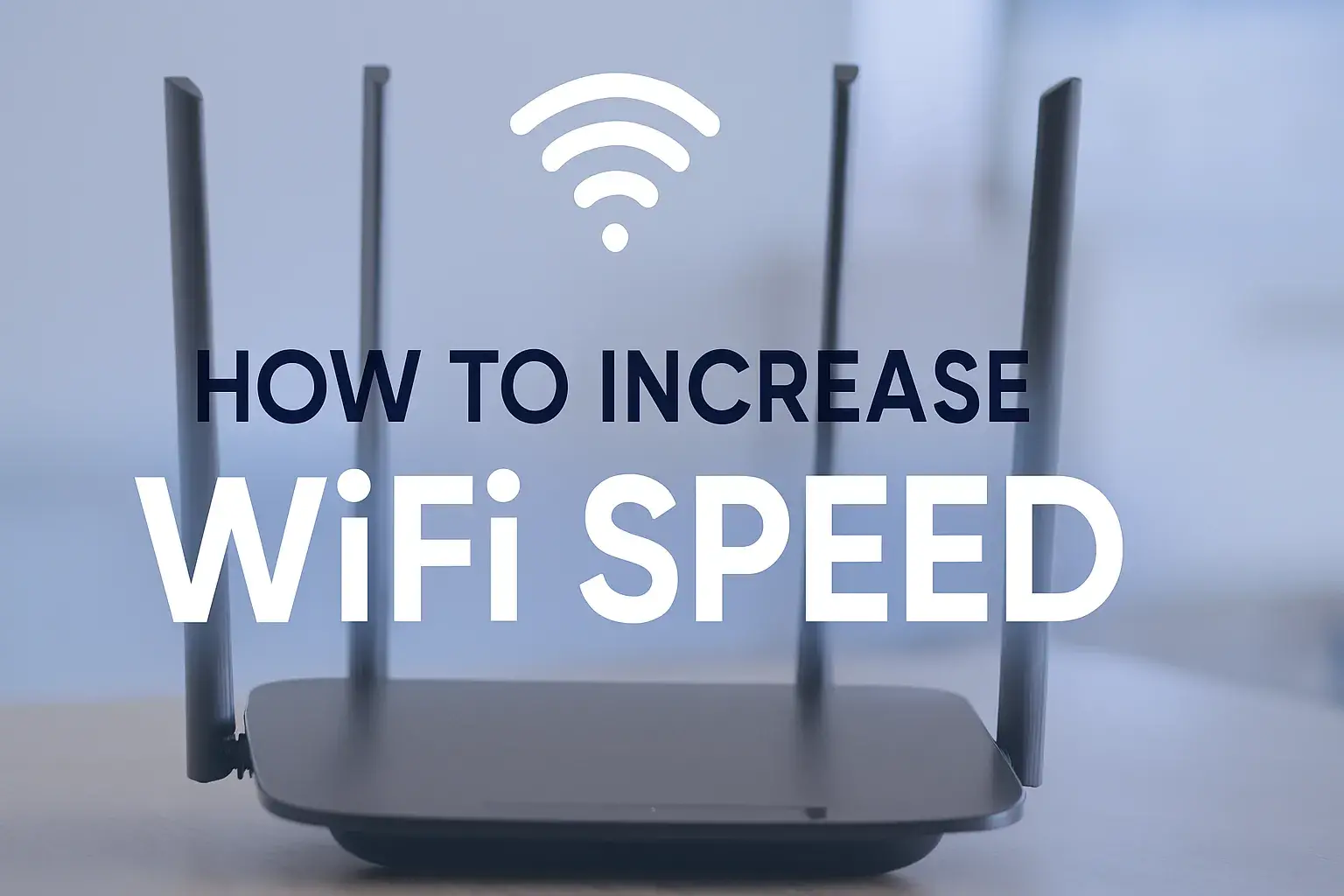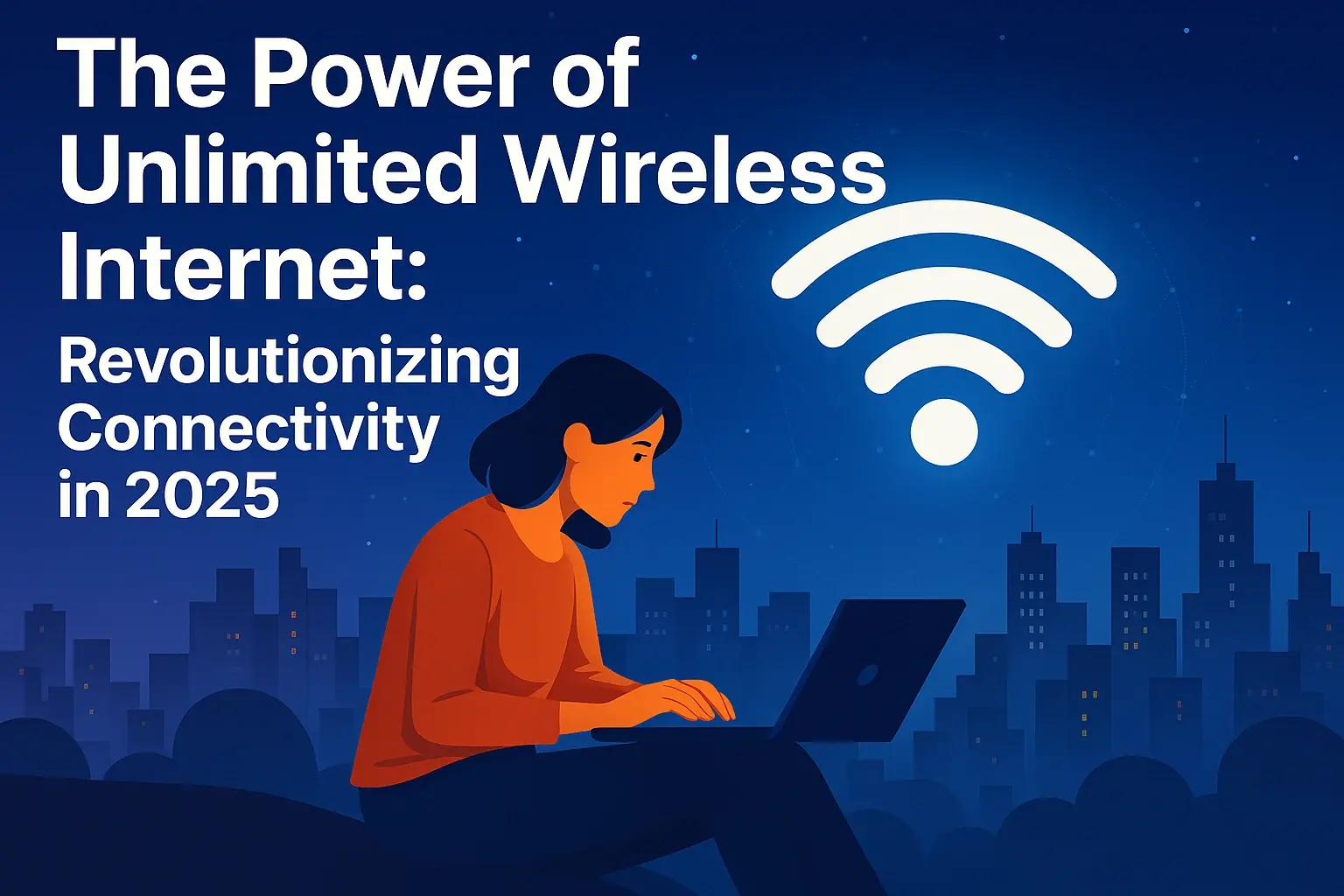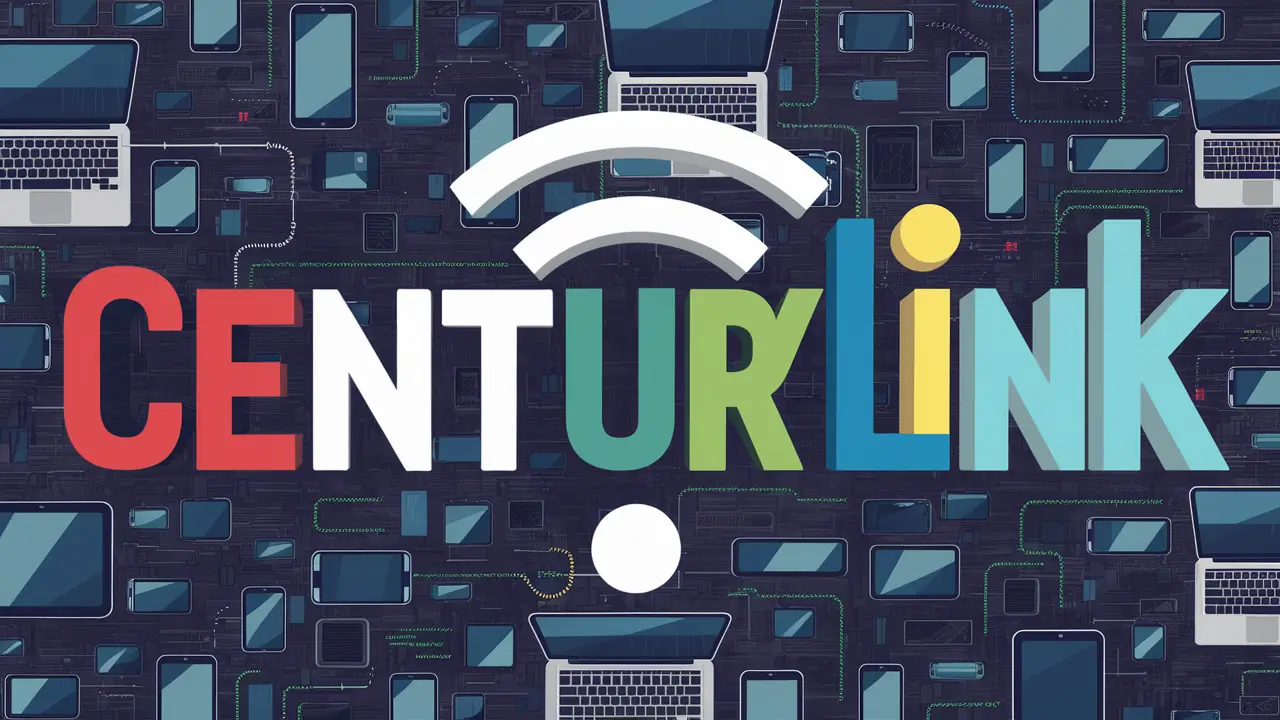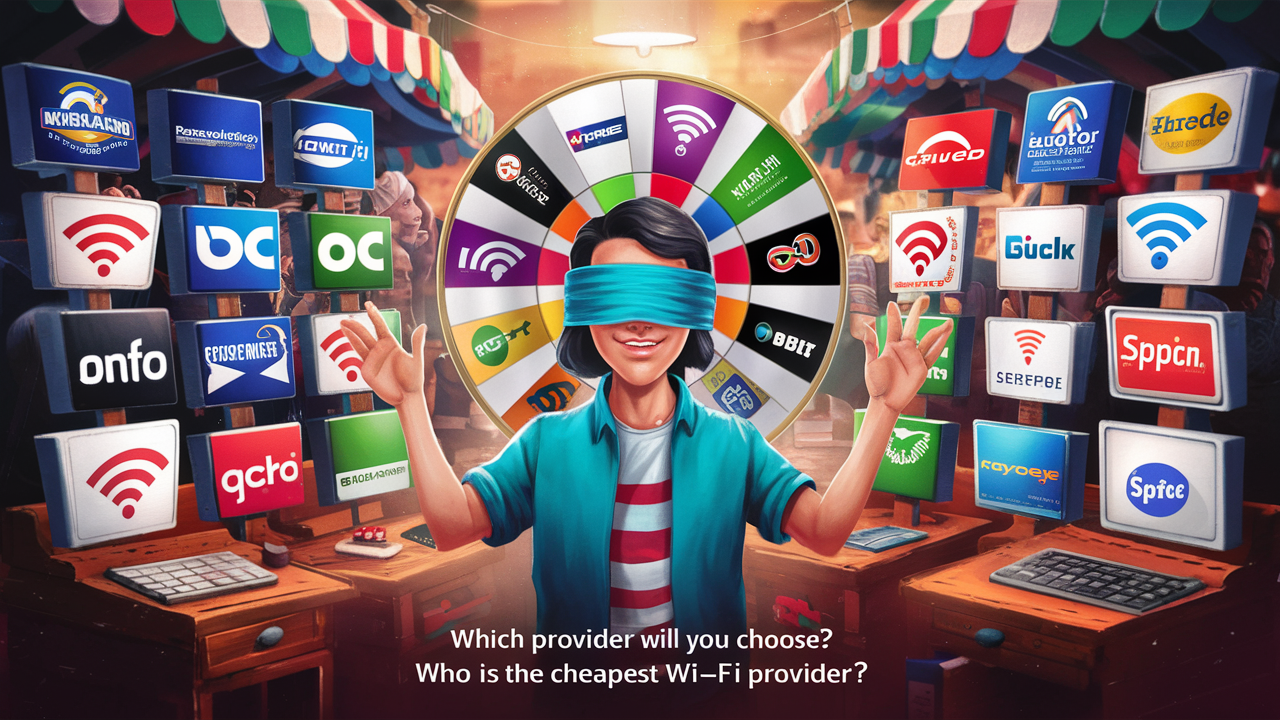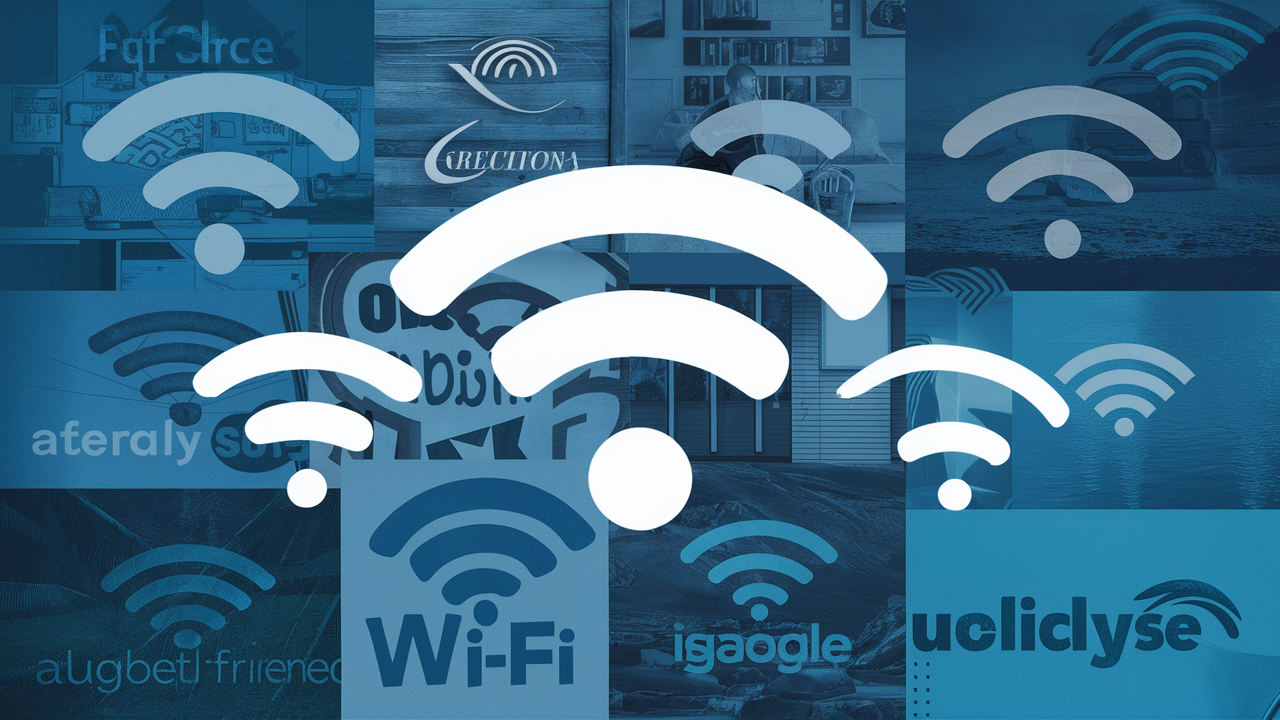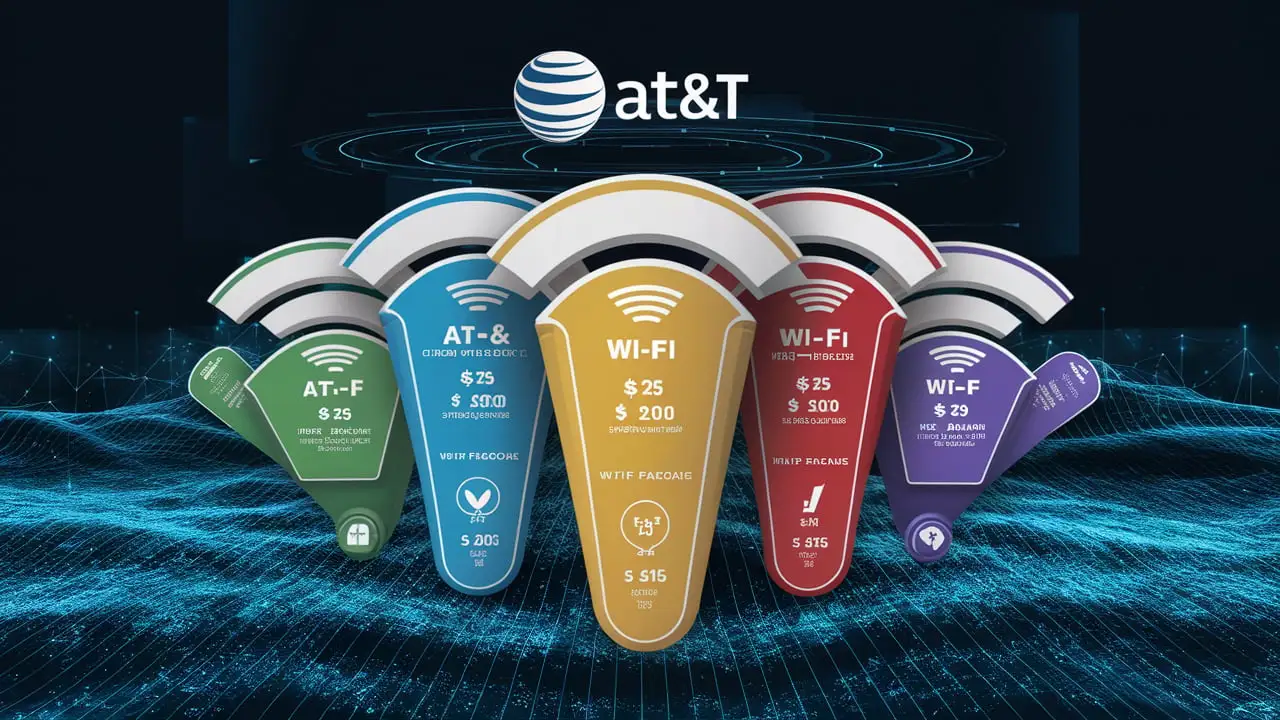Why is Verizon WiFi so expensive?
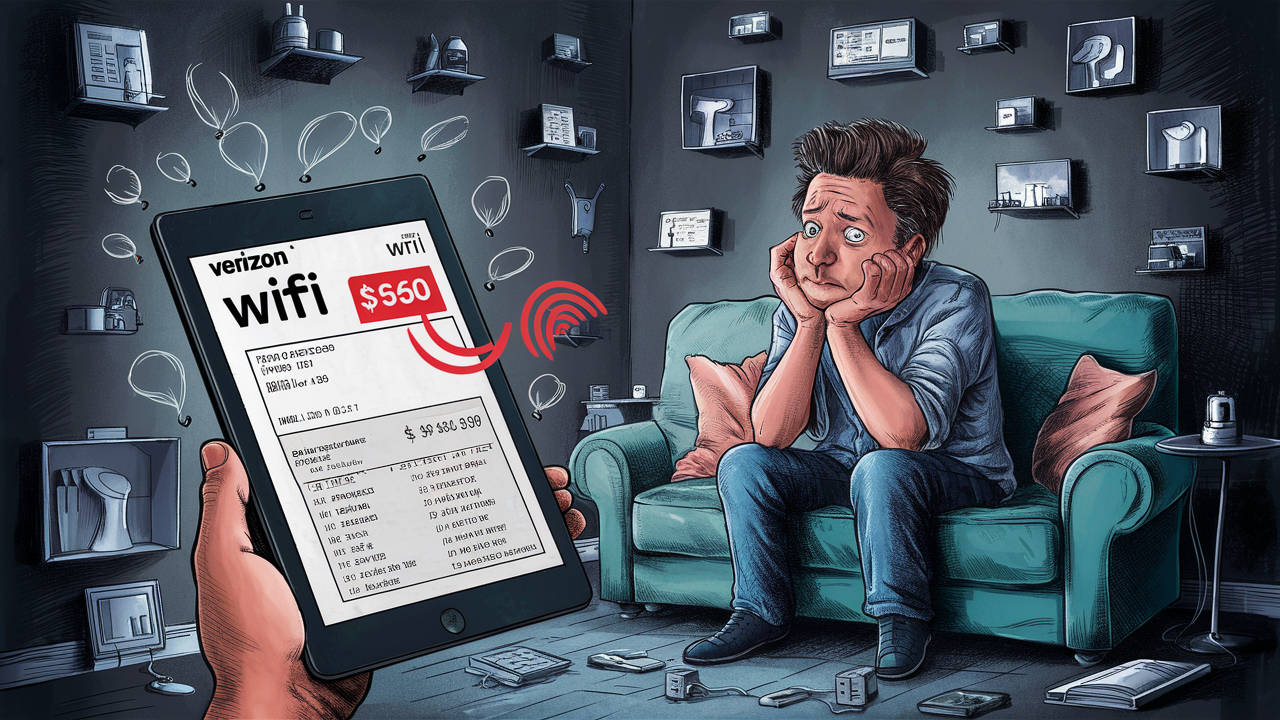
Verizon WiFi often comes with a premium price tag, leading many to ask: "Why is Verizon WiFi so expensive?" This post dives deep into the factors driving Verizon's pricing, from infrastructure investments and advanced technology to customer service and bundled services, providing a comprehensive answer for 2025.
Understanding Verizon's Pricing Strategy
When examining why Verizon WiFi appears expensive, it's crucial to understand that their pricing isn't arbitrary. Verizon, as a major telecommunications provider, operates on a business model that balances the cost of delivering high-quality services with market demand and competitive pressures. Their strategy often revolves around perceived value, aiming to justify a higher price point through superior network performance, advanced features, and a robust customer experience. In 2025, this strategy continues to be refined, with an emphasis on 5G integration and enhanced home internet solutions.
Several core tenets underpin Verizon's pricing. Firstly, there's the significant capital expenditure required to build and maintain a vast network. This includes laying fiber optic cables, deploying advanced wireless infrastructure, and constantly upgrading technology to meet increasing data demands. Secondly, Verizon positions itself as a premium provider, targeting customers who prioritize reliability, speed, and excellent service over the lowest possible cost. This market segmentation allows them to charge more for what they market as a superior product. Finally, the company often bundles services, offering discounts when customers combine internet with mobile plans or other Verizon offerings, which can obscure the true cost of individual services but present an attractive overall package.
The perception of expense is also influenced by how consumers compare Verizon's offerings. While headline prices for basic internet packages from smaller, regional providers might seem lower, they often don't include the same level of network redundancy, uptime guarantees, or bundled features that Verizon provides. Understanding these underlying factors is the first step in demystifying Verizon's pricing structure and determining if the cost aligns with the value received.
Infrastructure and Technology Investments
One of the primary drivers behind Verizon's pricing is the immense and ongoing investment in its network infrastructure. This isn't just about providing a connection; it's about building and maintaining a cutting-edge, reliable, and high-capacity network that can support the ever-growing demands of modern digital life. In 2025, these investments are heavily focused on expanding and optimizing their 5G Home Internet services, as well as strengthening their fiber optic backbone for Fios customers.
Fiber Optic Network (Fios) Expansion
For customers who have access to Verizon Fios, the underlying fiber optic technology is a significant cost factor. Laying fiber optic cables directly to homes and businesses is an incredibly expensive and time-consuming process. This involves trenching, obtaining permits, and extensive construction work. However, fiber offers unparalleled speed, low latency, and reliability compared to traditional cable or DSL. Verizon's commitment to expanding its Fios footprint, particularly in underserved areas or areas where they can gain a competitive advantage, requires substantial upfront capital. The return on this investment is reflected in the pricing of Fios plans, which are often positioned at the higher end of the market due to the superior performance it delivers.
5G Home Internet Deployment
Verizon's 5G Home Internet service represents another massive technological investment. The rollout of 5G technology, especially for fixed wireless access (FWA) like home internet, requires the deployment of new cell towers, upgrades to existing infrastructure, and the development of specialized customer premises equipment (CPE) – the modems and routers that connect homes to the 5G network. This technology offers the potential for high speeds and lower latency without the need for physical cables to every home, making it a more scalable and potentially faster deployment in certain areas. However, the initial build-out of 5G infrastructure, including the densification of cell sites and the acquisition of spectrum licenses, is astronomically expensive. Verizon aims to recoup these costs through its 5G Home Internet plans, which are marketed as a competitive alternative to traditional broadband, but still carry a premium reflecting the advanced wireless technology.
Network Upgrades and Maintenance
Beyond new deployments, Verizon continuously invests in upgrading and maintaining its existing network. This includes:
- Capacity Upgrades: As more devices connect and data consumption increases, Verizon must constantly enhance the capacity of its network to prevent congestion and ensure consistent speeds for all users. This involves upgrading routers, switches, and backhaul connections.
- Technology Evolution: The telecommunications landscape is always evolving. Verizon must invest in research and development and adopt new technologies (like advanced Wi-Fi standards, improved network management software, and more efficient data transmission protocols) to stay competitive and meet future demands.
- Redundancy and Resilience: To ensure high uptime and reliability, Verizon builds redundancy into its network. This means having backup systems and multiple pathways for data to travel, which adds to the overall cost of infrastructure.
- Security Enhancements: Protecting its network and customer data from cyber threats requires ongoing investment in security measures, firewalls, intrusion detection systems, and regular security audits.
These continuous investments in infrastructure and technology are fundamental to Verizon's ability to deliver the high-performance internet services that customers expect. The cost of maintaining and advancing such a complex network is a significant factor in why Verizon's pricing is often perceived as higher than that of smaller, less technologically advanced providers.
Network Quality and Reliability
When discussing the cost of Verizon WiFi, the emphasis on network quality and reliability is paramount. In the competitive landscape of internet service providers (ISPs), Verizon has built a reputation for delivering a stable and consistent connection. This reputation is not accidental; it is the result of deliberate engineering, rigorous testing, and substantial ongoing investment in network architecture and maintenance. For many consumers, particularly those who rely heavily on their internet for work, streaming, or critical communications, this level of dependability is a key purchasing factor that justifies a higher price point.
Speed and Performance Metrics
Verizon consistently ranks highly in independent speed tests and network performance reports for 2025. This is particularly true for their Fios fiber optic service, which offers symmetrical upload and download speeds, a significant advantage for video conferencing, online gaming, and uploading large files. Even their 5G Home Internet, while variable depending on location and signal strength, is designed to offer competitive speeds that often surpass traditional cable or DSL offerings in the same areas. The ability to consistently deliver advertised speeds, without significant throttling or slowdowns during peak hours, is a direct outcome of the robust infrastructure discussed previously.
Uptime and Service Guarantees
Reliability, measured by network uptime, is a critical differentiator. Verizon invests heavily in redundant systems, backup power, and proactive network monitoring to minimize service disruptions. While no network is entirely immune to outages, Verizon's infrastructure is designed for high availability. This commitment to uptime means fewer frustrating interruptions for users, which translates into a more valuable service. For businesses or individuals who cannot afford downtime, the assurance of a stable connection is worth a premium. This focus on reliability is a core component of Verizon's value proposition.
Low Latency
Latency, the delay between sending and receiving data, is another crucial performance metric, especially for real-time applications like online gaming, video conferencing, and virtual reality. Fiber optic networks, like Verizon Fios, inherently offer very low latency. Verizon's 5G network is also designed with low latency in mind, aiming to provide a responsive online experience. High latency can render certain applications unusable or severely degrade their performance. By investing in technologies that minimize latency, Verizon enhances the usability and perceived value of its internet services, justifying a higher price for users who demand immediate responsiveness.
Network Congestion Management
As internet usage grows, network congestion becomes a significant challenge for ISPs. Verizon employs sophisticated network management techniques to prioritize traffic and ensure that users experience consistent speeds even during peak usage times. This proactive approach to congestion management, which requires advanced technology and ongoing optimization, contributes to a more predictable and satisfactory user experience. Competitors who do not invest as heavily in these areas may experience more significant speed degradations during peak hours, making Verizon's consistent performance a key selling point and a justification for its pricing.
In essence, the premium price of Verizon WiFi is partly a reflection of the tangible benefits customers receive in terms of speed, reliability, low latency, and consistent performance. These are not easily replicated by providers with less advanced or less robust networks. The investment required to achieve and maintain these high standards is a significant factor in their cost structure and, consequently, their pricing.
Premium Services and Features
Beyond the core internet connection, Verizon often bundles or offers a suite of premium services and features that contribute to its higher price point. These added benefits are designed to enhance the overall customer experience, provide greater convenience, and differentiate Verizon from competitors who may offer a more basic service. In 2025, these features are increasingly integrated with smart home technology and advanced connectivity solutions.
Advanced Router and Wi-Fi Equipment
Verizon often provides customers with high-quality Wi-Fi routers and modems, sometimes at no additional upfront cost or as part of a bundled package. These devices are typically more advanced than the basic equipment provided by some competitors. They may support the latest Wi-Fi standards (e.g., Wi-Fi 6 or Wi-Fi 6E), offer better range, support more simultaneous connections, and include enhanced security features. For Fios customers, Verizon often provides a robust ONT (Optical Network Terminal) and a powerful router designed to maximize the potential of the fiber connection. For 5G Home Internet, the provided equipment is specifically engineered to capture and utilize the 5G signal effectively. The cost of acquiring, maintaining, and upgrading this sophisticated hardware is factored into the overall service pricing.
Enhanced Security Suites
In today's digital landscape, online security is a major concern. Verizon often includes enhanced security features as part of its internet packages. This can range from basic network protection and malware blocking to more comprehensive cybersecurity suites that offer identity theft protection, VPN services, or advanced parental controls. These security layers add value for customers who are looking for a more protected online experience without having to purchase separate security software. The development and maintenance of these security services represent an ongoing cost for Verizon.
- Network-level security: Protection against common online threats before they reach individual devices.
- Device-level security: Software that can be installed on multiple devices for comprehensive protection.
- Parental controls: Tools to manage internet access for children, including content filtering and time limits.
Bundled Mobile and Home Services
Verizon is a major player in both mobile and home internet services. They often leverage this position to offer attractive bundles. For instance, customers who subscribe to both Verizon mobile and Verizon Fios or 5G Home Internet may receive significant discounts, unlimited data on their mobile plans, or other perks. These bundles create a sticky ecosystem, encouraging customer loyalty and increasing the overall value proposition for customers who are already invested in the Verizon brand. While the individual components might seem expensive, the bundled price can be competitive, but it means that the cost of the internet service is intertwined with other services.
Smart Home Integration and Support
As smart home technology becomes more prevalent, Verizon is increasingly positioning its internet services as the backbone for these connected homes. This can include offering support for smart home devices, providing integrated solutions, or ensuring their network is optimized for the demands of multiple connected devices. While not always a direct feature of the internet plan itself, the underlying network quality and the availability of compatible equipment make Verizon a preferred choice for those building a smart home ecosystem. This forward-looking approach to connectivity adds to the perceived value.
Priority Customer Support
A hallmark of premium service is often superior customer support. Verizon typically offers multiple channels for customer assistance, including online chat, phone support, and in-store assistance. For Fios and 5G Home Internet customers, there may be dedicated support teams trained to handle specific technical issues related to these services. While the quality of customer service can vary, the investment in training support staff, maintaining call centers, and developing self-help resources contributes to the overall cost of providing a premium experience. Customers who value quick and effective problem resolution are often willing to pay more for this assurance.
These premium services and features, while not always explicitly itemized on a bill, are integral to Verizon's overall offering. They contribute to a more robust, secure, and convenient internet experience, which is a key reason why Verizon WiFi commands a higher price in the market.
Customer Service and Support
The quality and accessibility of customer service and technical support are significant factors influencing the perceived value and, consequently, the pricing of any service, including internet. Verizon, as a large, established telecommunications company, invests considerable resources into its customer support infrastructure. This investment aims to provide a level of service that justifies its premium pricing and differentiates it from smaller, less resourced competitors. In 2025, this includes a multi-channel approach and specialized support teams.
Multi-Channel Support Options
Verizon offers a variety of ways for customers to get help, catering to different preferences and needs:
- Phone Support: Accessible customer service representatives are available to assist with billing inquiries, technical troubleshooting, and service changes.
- Online Chat: Real-time text-based support for quick questions and common issues.
- My Verizon App: A comprehensive mobile application that allows customers to manage their accounts, pay bills, troubleshoot common issues, and even access support resources.
- Verizon Stores: Physical locations where customers can receive in-person assistance, purchase equipment, and discuss their services.
- Online Help Center/FAQs: Extensive self-service resources, including articles, guides, and troubleshooting steps, to empower customers to resolve issues independently.
The cost associated with maintaining these diverse support channels, including staffing, technology, and platform development, is a component of Verizon's operational expenses, which are reflected in its pricing.
Technical Support Expertise
A key differentiator for Verizon is the level of expertise within its technical support teams. For Fios and 5G Home Internet services, customers often have access to specialized technicians who are knowledgeable about advanced networking concepts, fiber optics, and wireless technology. This expertise is crucial for diagnosing and resolving complex issues that might arise with high-speed internet connections. The training and ongoing development of these technical specialists require significant investment, contributing to the premium nature of the service.
Proactive Support and Network Monitoring
Verizon employs sophisticated network monitoring systems to detect potential issues before they significantly impact customers. This proactive approach allows them to address problems at the network level, often resolving them without the customer even being aware of an impending disruption. While this is a technological investment, it also reduces the burden on customer support by minimizing the number of reactive support calls. The efficiency gained through proactive measures can contribute to a more streamlined and cost-effective support operation in the long run.
Service Level Agreements (SLAs) and Guarantees
For business customers, and sometimes for residential customers seeking extra assurance, Verizon may offer Service Level Agreements (SLAs) that guarantee certain levels of uptime and performance. These agreements come with financial penalties if Verizon fails to meet the agreed-upon standards. The ability to offer such guarantees is underpinned by a robust network and a highly responsive support system, both of which are costly to maintain. While not always explicitly advertised for residential plans, the underlying commitment to reliability that enables such SLAs is a factor in the overall service quality and pricing.
Customer Retention Efforts
Excellent customer service is a key strategy for customer retention. By providing a positive and supportive experience, Verizon aims to keep its customers satisfied and reduce churn. The cost of acquiring a new customer is significantly higher than retaining an existing one. Therefore, investing in customer service that fosters loyalty is a sound business strategy. The premium pricing allows Verizon to allocate sufficient resources to these retention efforts, ensuring a consistent and high-quality support experience for its subscriber base.
In summary, the cost associated with Verizon's comprehensive, multi-channel, and expert-driven customer service and support system is a significant factor contributing to its higher pricing. Customers who value responsive and knowledgeable assistance are often willing to pay a premium for this assurance.
Bundling and Promotions
Verizon's pricing strategy is heavily influenced by its approach to bundling services and offering various promotions. While the standalone price of a Verizon internet plan might seem high, the company often incentivizes customers to bundle their internet with other Verizon services, such as mobile plans, home phone, or television packages. These bundles can offer substantial savings compared to purchasing services individually, making the overall cost more palatable for consumers who utilize multiple Verizon offerings.
Bundled Savings
One of the most common ways Verizon attempts to justify its pricing is through bundled discounts. For example, a customer who has a Verizon mobile plan might receive a discount on their Fios or 5G Home Internet service. Conversely, adding a mobile line to an existing internet subscription could unlock benefits like unlimited data or reduced monthly fees. These bundles create a more integrated and potentially cost-effective ecosystem for customers who are already part of the Verizon family. The perceived value of these savings can offset the higher individual service costs.
Example of a potential bundle (hypothetical for 2025):
| Service | Standalone Price (Estimated) | Bundled Price (Estimated) |
|---|---|---|
| Verizon Fios Gigabit Internet | $90/month | $75/month (with qualifying mobile plan) |
| Verizon Unlimited Mobile Plan | $80/month | $50/month (when bundled with Fios Gigabit) |
| Total (Standalone) | $170/month | $125/month |
Note: Actual prices and offers vary by location and current promotions.
Promotional Offers and Discounts
Verizon frequently runs promotional offers to attract new customers and retain existing ones. These can include:
- Introductory pricing: Lower rates for the first 12 or 24 months of service.
- Free equipment: Waived fees for modems, routers, or other necessary hardware.
- Gift cards or streaming service credits: One-time or recurring incentives to sign up.
- Discounted installation: Reduced or waived installation fees.
While these promotions can significantly lower the initial cost, it's crucial for consumers to understand the regular price after the promotional period ends. The higher base price allows Verizon to offer these attractive introductory deals while still covering its operational costs and infrastructure investments over the long term.
Loyalty Programs and Rewards
Verizon also implements loyalty programs and rewards to encourage long-term customer relationships. These might include exclusive discounts, early access to new technologies, or special offers that are not available to non-customers. Such programs aim to increase customer lifetime value, and the investment in these benefits is often supported by the revenue generated from premium pricing on core services.
The "Ecosystem" Advantage
For many consumers, the convenience of having all their essential digital services—mobile, internet, and potentially home phone or TV—from a single provider is a significant advantage. Verizon leverages this by creating an integrated ecosystem where services work seamlessly together and are managed through a single portal or app. This convenience factor, combined with potential cost savings through bundling, is a powerful incentive for customers to choose Verizon, even if the individual service prices appear higher.
It's important for consumers to carefully evaluate bundled offers and promotional pricing. While they can represent genuine savings, understanding the true cost of each service and the price after promotional periods expire is essential for making an informed decision. The existence of these bundles and promotions is a strategic part of Verizon's pricing model, designed to offer value and encourage customer loyalty, thereby supporting its premium positioning.
Competitor Analysis: How Verizon Stacks Up in 2025
To truly understand why Verizon WiFi might seem expensive, it's essential to compare its offerings and pricing against key competitors in the 2025 market. The competitive landscape for internet service is diverse, ranging from other major national providers to smaller regional ISPs and emerging technologies like satellite internet. Verizon's pricing strategy is heavily influenced by its position within this market and the value it aims to deliver relative to its rivals.
Major National Competitors (e.g., AT&T, Spectrum, Xfinity)
Compared to other large national providers, Verizon's pricing often aligns within a similar premium tier, especially for its fiber optic (Fios) services. AT&T also offers fiber in many areas, and its pricing is comparable. Cable providers like Spectrum and Xfinity (Comcast) often compete aggressively on price, particularly for their hybrid fiber-coaxial cable (HFC) networks. However, these cable providers typically offer lower upload speeds than Verizon's fiber, which can be a significant drawback for users with high upload demands.
Key comparison points in 2025:
- Fiber vs. Cable: Verizon Fios offers superior symmetrical speeds and lower latency than most cable internet plans. This performance advantage justifies a higher price for many users.
- 5G Home Internet vs. DSL/Cable: Verizon's 5G Home Internet aims to compete with cable and DSL on speed and price, offering a viable alternative where fiber isn't available. Its pricing is often competitive with mid-tier cable plans, but performance can be more variable.
- Bundling Strategies: All major providers offer bundles. Verizon's strength lies in its integration of mobile and home services, which can be a significant draw.
In 2025, the primary differentiator remains the underlying technology. Where Verizon offers fiber, it generally commands a premium for its superior performance. Where it offers 5G Home, it competes more directly with cable and DSL, often with aggressive introductory offers.
Regional ISPs and Smaller Providers
Smaller, regional Internet Service Providers (ISPs) can sometimes offer lower prices. These providers often have lower overheads, less extensive infrastructure to maintain, and may focus on specific geographic areas. However, they may lack the advanced technology, network redundancy, or comprehensive customer support that Verizon provides. Their service areas are also typically more limited.
Key comparison points:
- Price: Often lower for comparable advertised speeds.
- Technology: May rely on older technologies like DSL or less advanced cable networks.
- Reliability: Can be more susceptible to outages or congestion due to less robust infrastructure.
- Features: Typically offer fewer bundled services or premium features.
For users prioritizing the absolute lowest price and whose internet needs are basic, a regional ISP might be a suitable alternative. However, for those seeking top-tier performance, reliability, and integrated services, Verizon often presents a stronger value proposition despite the higher cost.
Emerging Technologies (e.g., Satellite, Fixed Wireless Access)
Satellite internet providers (e.g., Starlink) have become a more viable option in recent years, especially for rural areas where traditional broadband is unavailable. However, satellite internet generally suffers from higher latency and can be more susceptible to weather interference, making it less ideal for real-time applications. Verizon's 5G Home Internet is a form of Fixed Wireless Access (FWA) and competes directly with other FWA providers, as well as cable and DSL.
Key comparison points:
- Availability: Satellite is widely available, while 5G FWA is limited to areas with Verizon's 5G network coverage.
- Performance: 5G FWA generally offers lower latency and more consistent speeds than satellite.
- Cost: Pricing varies, but Verizon's 5G Home Internet is often positioned competitively against mid-tier plans from other technologies.
Verizon's Competitive Positioning
In 2025, Verizon positions itself as a premium provider, particularly with its Fios fiber optic service, emphasizing speed, reliability, and superior technology. Its 5G Home Internet service offers a competitive alternative, leveraging its advanced wireless network. While its prices may be higher than some competitors, this is often justified by:
- Superior Network Technology (Fiber): Symmetrical speeds and low latency.
- Advanced Wireless Technology (5G): Competitive speeds and a viable alternative to wired connections.
- Robust Infrastructure: Higher reliability and less susceptibility to congestion.
- Bundled Services: Integration with mobile plans offers significant value for existing Verizon customers.
- Customer Service: A commitment to providing a higher level of support.
Ultimately, the "expensiveness" of Verizon WiFi is relative. For users who demand the best performance, reliability, and integrated services, Verizon's pricing reflects the value delivered. For those with more basic needs or tighter budgets, other options might be more suitable, but often with trade-offs in performance or features.
Alternatives and Cost-Saving Tips
While Verizon offers a premium internet experience, its pricing may not be suitable for everyone's budget or needs. Fortunately, there are several alternatives and cost-saving strategies that consumers can explore to find a more affordable solution without sacrificing too much in terms of performance and reliability. In 2025, the options continue to expand, offering more flexibility.
Exploring Alternative Internet Providers
The first step is to identify other providers available in your specific location. This includes:
- Major Cable Companies: Spectrum, Xfinity (Comcast), Cox, etc. While they may not offer fiber, their cable internet plans can be competitive, especially if you can negotiate pricing or find good promotional deals. Pay close attention to upload speeds, as these are often significantly lower than fiber.
- Other Fiber Providers: Companies like AT&T Fiber, CenturyLink (Quantum Fiber), or local municipal fiber initiatives may offer fiber optic service in your area. Compare their speeds, pricing, and contract terms directly with Verizon Fios.
- Regional ISPs: Search for smaller, local providers. They might offer more personalized service or specialized plans that better suit your needs and budget.
- Fixed Wireless Access (FWA): Besides Verizon's 5G Home, look for other FWA providers that leverage 4G LTE or 5G technology. These can be good options in areas where wired infrastructure is lacking.
- Satellite Internet: For very rural areas, satellite options like Starlink are becoming more competitive, though latency remains a concern for real-time applications.
Use online tools that allow you to input your address and see all available providers and plans in your area. This is the most effective way to get a true apples-to-apples comparison.
Negotiate with Verizon
Don't be afraid to negotiate with Verizon directly. If you are an existing customer looking to reduce your bill, or a potential new customer comparing offers, you can often achieve a better rate by:
- Mentioning Competitor Offers: Let Verizon know what other providers are offering in your area. They may be willing to match or beat competitor pricing to retain your business.
- Asking About Promotions: Inquire about any current or upcoming promotions, especially introductory offers or discounts for bundling services.
- Reviewing Your Plan: If you're not using the full speed or features of your current plan, consider downgrading to a less expensive tier.
Optimize Your Existing Plan
If you decide to stick with Verizon, consider these strategies to maximize value:
- Bundle Strategically: If you also use Verizon mobile services, explore bundling your internet with your phone plan. The discounts and perks can significantly reduce your overall monthly expenses.
- Monitor Your Usage: Understand your typical internet usage patterns. If you rarely exceed certain speeds, a lower-tier plan might be sufficient and save you money.
- Purchase Your Own Equipment: In some cases, Verizon may allow you to use your own compatible modem or router, which can save you monthly equipment rental fees. Check Verizon's compatibility list and ensure the equipment meets their specifications.
Evaluate Your Actual Needs
The most effective cost-saving tip is to honestly assess your internet needs. Do you truly need gigabit speeds for streaming 4K content on multiple devices simultaneously, or would a 300 Mbps plan suffice? For basic browsing, email, and standard definition streaming, lower speeds are perfectly adequate. Avoid paying for more bandwidth than you actually consume. Consider the number of devices in your household, the types of activities you engage in (streaming, gaming, video conferencing, large file uploads/downloads), and the number of users simultaneously online.
Look for Public Wi-Fi and Mobile Hotspots
For occasional heavy usage or when on the go, consider utilizing public Wi-Fi hotspots (e.g., at libraries, coffee shops) or using your mobile phone as a hotspot. While not a replacement for reliable home internet, these can supplement your service and reduce the need for the absolute highest speeds at home if your usage is sporadic.
By exploring these alternatives and cost-saving tips, consumers can make more informed decisions about their internet service. While Verizon offers a high-quality product, understanding the market and your own needs is key to finding the best value for your specific situation.
Conclusion
The question "Why is Verizon WiFi so expensive?" is multifaceted, stemming from significant investments in cutting-edge infrastructure, a commitment to superior network quality and reliability, the inclusion of premium services, and robust customer support. In 2025, Verizon continues to leverage its advanced fiber optic (Fios) and 5G networks, which require substantial capital to build, maintain, and upgrade. This technological foundation ensures high speeds, low latency, and dependable service, justifying a premium price for users who value performance and consistency.
Furthermore, Verizon's strategy often involves bundling services, particularly with its mobile offerings, and providing attractive promotional deals to enhance overall customer value. While these can mitigate the perceived cost, the underlying pricing reflects the high standards of service and technology offered. For those seeking the best possible internet experience, Verizon's pricing aligns with the value delivered. However, by exploring alternative providers, negotiating effectively, and accurately assessing personal internet needs, consumers can find more budget-friendly options that still meet their requirements.
